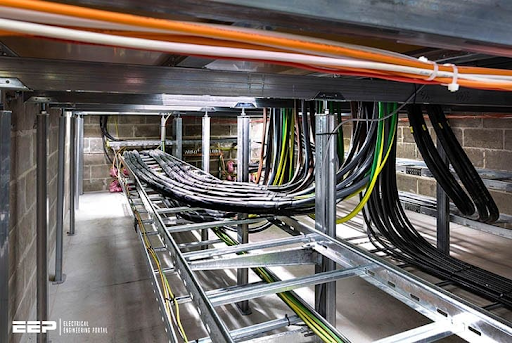High Voltage Power Cables and Their Importance in Modern Infrastructur

High Voltage Cabling plays a crucial role in powering our modern world. These thick cables, often unseen but always working, carry electricity over long distances from power plants to our homes and industries. They are the silent giants that keep our lights on, our machines running, and our lives connected.
In this article, we delve into the world of high voltage power cables, exploring their uses, importance, and the technology behind them.
What Are High Voltage Power Cables?
High Voltage Power Cables are thick, insulated wires designed to carry electricity at high voltages. Unlike regular electrical wires, which handle lower voltages, high voltage cables are built to withstand immense electrical stresses.
They are typically made of copper or aluminum conductors surrounded by layers of insulation and protective sheathing. These cables can transmit electricity over long distances with minimal power loss, making them essential for distributing electricity efficiently across cities and regions.
Uses of High Voltage Power Cables:
High Voltage Power Cables are used in various applications, including:
- Power Transmission: One of the primary uses of High Voltage Cabling is to transmit electricity from power plants to substations and distribution points. These cables can carry large amounts of power over hundreds of miles, making it possible to supply electricity to distant regions efficiently.
- Industrial Applications: Industries with high power requirements, such as manufacturing plants and mining operations, rely on high voltage cables to deliver the electricity needed to operate heavy machinery and equipment.
- Renewable Energy: With the growing emphasis on renewable energy sources like wind and solar power, high voltage cables are essential for transmitting electricity from remote wind farms and solar parks to the main power grid.
- Undersea Cabling: High voltage cables are also used in undersea applications to connect offshore wind farms or to link islands to mainland power grids. These cables are specially designed to withstand the harsh conditions of the ocean floor.
- Railway Electrification: In electrified railway systems, high voltage cables supply power to trains, allowing for faster and more efficient transportation.
The Technology Behind High Voltage Power Cables:
High Voltage Power Cables are engineered using advanced technologies to ensure reliability and safety. Some key features include:
- Insulation: The insulation surrounding the conductor prevents electricity from leaking out and protects the cable from environmental factors like moisture and heat.
- Shielding: High voltage cables are often shielded with Circuit breaker lockout and other insulations to minimize electromagnetic interference and reduce the risk of electrical faults.
- Strength and Durability: These cables are built to withstand mechanical stress, temperature fluctuations, and other challenges encountered during installation and operation.
- Monitoring Systems: Modern high voltage cables may include monitoring systems that detect faults and abnormalities, allowing for timely maintenance and repairs.
Conclusion:
In conclusion, High Voltage Power Cables are essential components of our electrical infrastructure, enabling the efficient transmission of electricity for various applications. From powering homes and industries to facilitating the integration of renewable energy sources, these cables play a vital role in shaping our modern world.
As technology continues to advance, high voltage cables will undoubtedly evolve to meet the growing demands of our electrified society.






